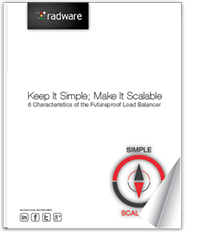Virtualizing the ADC – Molding Mature Technologies for the Cloud
Virtualization of existing technologies is an evolutionary step in the development of cloud designs. The cloud is supposed to be an architecture that delivers applications and data in a reliable and fault-tolerant manner. The benefits that we want to derive are not new. We are just applying them to a different business model. We created the cloud to deliver applications and data anytime, anywhere, and to any device. We need to reconfigure existing processes and technologies to support the evolving cloud architecture.

Commuting in a cloud
When I was working in New York City, I used public transportation to get to work and around the city. I rode New Jersey Transit’s North East Corridor commuter train into the city and at Penn Station, I caught the A-C-E subway line downtown to my office. The system was reliable, usually down to the minute. When a train broke down or there were other mechanical issues, the transit system replaced or added trains to ensure the everything still arrived on time.
Occasionally, when the problem caused a significant delay, I was able to use alternate, backup, plans to get to work. I could ride the 1-9 subway train to get close to the office. In the worst case, I always had the option of hailing a taxi or hiring a car. I had the convenience of utilizing a system that was already well established and could ensure a successful daily commute.
We cannot assume that the cloud is already built and all we have to do is be a passenger or application in the network. As IT architects, we are the ones who are helping build and define the cloud. When we put our applications and data in the cloud, we need to leverage technologies that we have proven and relied on in the past.
[You might also like: Virtualization: Millennial Networks for the Millennial Generation]
Old dogs, new tricks
Earlier, I discussed how load balancing technologies like server load balancing (SLB) and global server load balancing (GSLB) have been instrumental in the developmental evolution of cloud architectures. The cloud is designed to deliver agility and elasticity to the application. The load balancing technologies enable the cloud to function as we envision.
The cloud requires a flexible and dynamic infrastructure that can adapt to rapidly changing conditions. This means the core technologies within the cloud need to be virtualized. It is not realistic to think that we can install, move, and configure proprietary hardware-based appliances in a time-scale that meets the expectations of a cloud environment.
Since application delivery controller (ADC) technologies including load balancing are an integral part of cloud architectures, we need a virtualized ADC (vADC) as well. The vADC, such as Radware’s Alteon VA, is functionally identical to the hardware-based ADC solutions with performance characteristics based on the common off-the-shelf (COTS) hardware that the virtual instance is installed on.
Consistency is king
An important consideration as applications and data are migrated to the cloud is the need for integration with existing IT architectures and components that may not be fully virtualized and ‘cloudified’. From an operational IT perspective, it is ideal to give the ability to manage the technologies based on their functions, not on the platform. This means that it does not matter if the load balancing capability is virtualized, on proprietary hardware, or within a cloud environment. The operational management of the technology, itself, should be platform independent.
As IT architects, we continue to develop and evolve cloud technologies. We need to take advantage of the technologies we have developed and refined and incorporate them into the current architectures to maximize our experience and expertise. The virtualization and integration of ADC technologies is critical to the success of the cloud.




